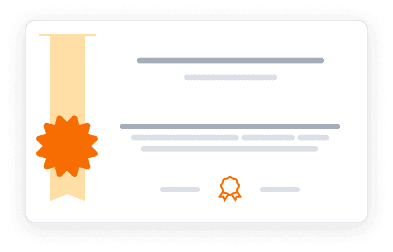Master teaching strategies for variables and nested loops in block programming, designed for K-12 computer science education.
Master teaching strategies for variables and nested loops in block programming, designed for K-12 computer science education.
This course cannot be purchased separately - to access the complete learning experience, graded assignments, and earn certificates, you'll need to enroll in the full Computational Thinking & Block Programming in K-12 Education Specialization program. You can audit this specific course for free to explore the content, which includes access to course materials and lectures. This allows you to learn at your own pace without any financial commitment.
24,098 already enrolled
Instructors:
English
What you'll learn
Guide students effectively in learning nested loops and variables
Implement Parsons Problems to reduce learning frustration
Create engaging and equitable computer science classrooms
Develop debugging strategies for common student challenges
Design interactive programming activities and assignments
Foster inclusive learning environments for all students
Skills you'll gain
This course includes:
3.8 Hours PreRecorded video
11 assignments
Access on Mobile, Tablet, Desktop
FullTime access
Shareable certificate
Get a Completion Certificate
Share your certificate with prospective employers and your professional network on LinkedIn.
Created by
Provided by

Top companies offer this course to their employees
Top companies provide this course to enhance their employees' skills, ensuring they excel in handling complex projects and drive organizational success.





There are 6 modules in this course
This comprehensive course equips K-12 educators with the knowledge and skills to teach computational thinking through variables and nested loops. Using block-based programming tools like Snap, teachers learn both the technical concepts and effective pedagogical approaches. The curriculum emphasizes hands-on learning through interactive puzzles, classroom discussions, and programming activities. Special attention is given to creating an equitable learning environment and using Parsons Problems to reduce student frustration. The course includes strategies for debugging, problem-solving, and designing creative programming projects.
Welcome!
Module 1 · 29 Minutes to complete
Nested Repeats
Module 2 · 4 Hours to complete
More Nested Repeats & Events
Module 3 · 3 Hours to complete
More Events & Variables
Module 4 · 3 Hours to complete
More Variables
Module 5 · 3 Hours to complete
Equity & Pedagogy
Module 6 · 1 Hours to complete
Fee Structure
Instructor
Computing Education Pioneer and Pedagogical Innovation Leader
Dr. Beth Simon serves as a Teaching Professor in the Department of Education Studies at UC San Diego, where she has revolutionized computer science education through evidence-based teaching practices and curriculum development. After earning her Ph.D. in Computer Science from UCSD in 2002, she has dedicated her career to advancing computing education at both K-12 and university levels. Her pioneering work includes developing high school computing curricula, implementing Peer Instruction methodologies, and creating the Graduate Certificate program for K-12 Computer Science Education. Her diverse roles have included serving as Director of UCSD's Center for Teaching Development, Principal Teaching and Learning Specialist at Coursera (2014-2015), and Faculty Advisor for Digital Learning in the UCSD Teaching + Learning Commons. Her research, supported by numerous National Science Foundation grants, has significantly improved student outcomes in computing education, particularly through active learning practices and technology-enhanced teaching. Her impact extends beyond UCSD through her work with the Carl Wieman Science Education Initiative at UBC and her leadership in developing MOOCs and professional development programs for educators nationwide.
Testimonials
Testimonials and success stories are a testament to the quality of this program and its impact on your career and learning journey. Be the first to help others make an informed decision by sharing your review of the course.
Frequently asked questions
Below are some of the most commonly asked questions about this course. We aim to provide clear and concise answers to help you better understand the course content, structure, and any other relevant information. If you have any additional questions or if your question is not listed here, please don't hesitate to reach out to our support team for further assistance.



